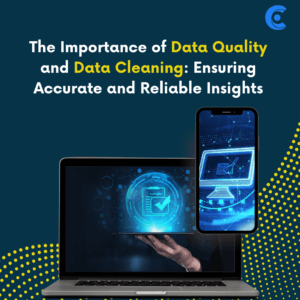The Importance of Data Quality and Data Cleaning: Ensuring Accurate and Reliable Insights

In today’s digital world, data rules the roost. It’s the fuel that powers analytics and makes machine learning tick. But here’s the catch: not all data is made equal. To get valuable insights and make smart decisions, you need good data quality. In this article, we’ll talk about why data quality is so important and share some handy tips for cleaning and checking your data.
The Data Challenge
Think of data like the foundation of a house. If it’s shaky, the whole house is at risk. Similarly, if your data isn’t reliable, everything you build on it becomes shaky too. Bad data can lead to costly mistakes, missed opportunities, and a loss of trust.
Data Quality in Analytics
In the world of analytics, data quality is like your trusty guide. Good data quality means your analyses are based on accurate info. It lowers the risk of drawing wrong conclusions or making bad decisions. Basically, data quality is the compass for your analytics journey.
Why Machine Learning Loves Clean Data
Machine learning is all about data. It learns patterns, predicts stuff, and does tasks automatically. But here’s the thing: machine learning is only as good as the data you give it. If your data is messy, it can confuse the algorithms, leading to bad results or even total failure. To make the most of machine learning, you need spotless data.
Tips for Cleaning and Checking Data
- Spot Outliers: Start by finding unusual or strange values in your data. These can mess up your analyses. Investigate them and either fix them or get rid of them.
- Handle Missing Stuff: Missing data is a common headache, but it can mess things up. Use methods like guessing missing values or tossing out incomplete records.
- Keep Things Consistent: Make sure all your data looks the same. This means the way dates are written, the units of measurement, and the categories you use.
- Find and Remove Copies: Look for and delete any duplicate records to avoid having the same data twice (or more).
- Rules for Data Check: Put in place rules to catch errors when people enter data. This stops wrong stuff from getting in.
- Use Tools for Cleaning: There are tools and scripts that can help clean data automatically, making the job easier and keeping data quality high.
Conclusion
Data quality isn’t a one-time thing; it’s something you always need to watch out for. Clean, reliable data is what makes your analytics and machine learning work well. It gives you confidence in your decisions and helps your business succeed. By taking data quality seriously and using smart strategies to clean and check your data, you can make your data a real asset instead of a problem.
Share your valuable insides with us !
